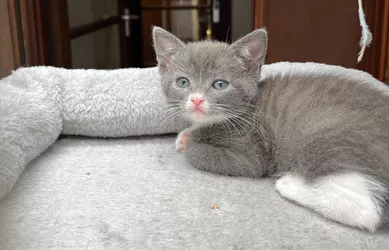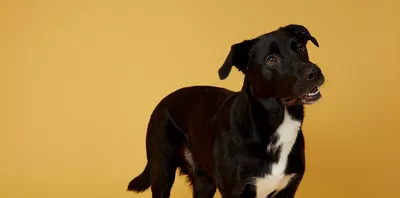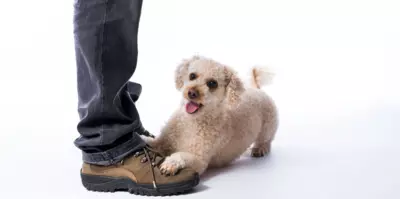Why Do Dogs Chase Cats?
- 21 Sep 2023
- 3m read

One behaviour that often leaves pet owners scratching their heads is why dogs chase cats. In this article, we'll delve into the reasons behind this common pooch behaviour and provide insights on how to manage it.
Why Do Dogs Terrorise Cats?
If you've ever witnessed your dog chasing your cat, you might wonder why they seem to enjoy "terrorising" their feline companion. To understand this behaviour, we need to look at the natural instincts of dogs.
Do Dogs Have a Natural Instinct to Chase Cats?
Dogs are descendants of wolves, and like their wild ancestors, they have inherited certain hunting instincts.
One of these instincts is the urge to chase small, fast-moving creatures, including cats. In the wild, this behaviour would have helped them hunt for food. While our beloved pets no longer need to hunt for survival, these instincts remain a part of their DNA.
Is It Ok For My Dog to Chase My Cat?
The occasional chase between your dog and cat may seem harmless, but it's essential to assess the situation.
Some dogs may engage in playful chasing without any intent to harm the cat, while others might become aggressive. It's crucial to differentiate between the two.
If your dog's chasing behaviour is playful and both your pets seem comfortable with it, it's generally okay. However, if the cat is distressed, or if the dog's behaviour becomes aggressive, it's time to take action.
How Do I Get My Dog to Stop Chasing the Cat?
If you want to discourage your dog from chasing your cat, here are some effective steps you can take:
1. Supervise interactions
Always supervise your dog and cat when they are together. This allows you to intervene if necessary and ensures the safety of both pets.
2. Training
Enrol your dog in obedience training classes. Basic commands like "leave it" and "stay" can be helpful in controlling their impulses.
3. Create safe spaces
Provide your cat with high-up hiding spots or separate areas where they can escape from the dog if needed.
4. Positive reinforcement
Reward your dog when they exhibit calm behaviour around the cat. Positive reinforcement can go a long way in modifying their behaviour.
5. Seek professional help
If your dog's chasing behaviour is severe or aggressive, consider consulting a professional dog trainer or behaviourist.
How Do You Know If Your Dog Is Aggressive Towards Cats?
Recognising aggression in dogs is crucial for ensuring the safety of your feline friend. Here are some signs that your dog may be displaying aggression towards your cat:
Growling and snarling
Vocalisations like growling and snarling can be indicators of aggression.
Stiff body language
A dog displaying aggression may have a tense and stiff body posture.
Raised hackles
When a dog's hackles (the fur along their back) are raised, it often signifies aggression or agitation.
Lunging or biting
Any attempt to bite or lunge at the cat is a clear sign of aggression.
Prolonged staring
Intense, prolonged staring can also be a sign of aggression in dogs.
What Should You Do If Your Dog Attacks a Cat?
In the unfortunate event that your dog attacks your cat, it's crucial to take immediate action to protect both pets.
Follow these steps:
1. Separate them
Safely separate your dog and cat to prevent further harm. Use physical barriers like gates or doors.
2. Assess injuries
Check both pets for injuries. If either is seriously injured, seek immediate veterinary attention.
3. Consult a professional
Reach out to a professional dog trainer or behaviourist to address the underlying causes of the attack.
4. Gradual reintroduction
If both pets recover, reintroduce them gradually under supervision. Use positive reinforcement to reward calm behaviour.
Remember, it's essential to prioritise the safety and well-being of all your furry family members.




.png)